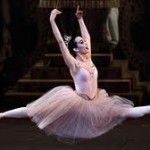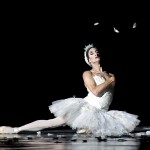This growing firestorm on social media zigs and zags, but at the heart of the diversity issue is the question: “who are the dominant taste-makers in the ballet world today” and do they have the foresight, the will, and the $$, to fix the problem? (Check out Ballet to the People’s comment on this piece.)
In response to Sarah Marsh and Olivia Goldhill’s outcry over the dearth of black ballerinas, Luke Jennings thoughtfully claims racism is not the issue in the ballet world – access is.
Alastair Macaulay called out a number of ballet companies for perpetuating trite, offensive stereotypes. However, when referring to outdated stagings of the classics, he sensibly pleads: “In a racially pluralist society I hope we can all live with a little ethnographical incorrectness.”
(Disappointing that the latest HuffPo piece was uncredited. Ballet to the People believes anonymity on the internet should be reserved for whistle-blowers whose lives may be endangered by their brave attempts to bring criminals to justice. Somehow she can’t imagine a ballerina stalking a HuffPo columnist and whacking him about the head with her size 6-1/2 Gaynor Mindens.)



Interesting debate. I liked your comment on HUff post too. I just remember dancing in the corps of Swan Lake in Boston Ballet. (Counting me, there were two biracial women between the corps and the second company, also one Latina woman with skin as brown as ours). As Swans, we were all told we must apply white face and body make up, as the white women did. The three of us did as we were told, just to prove how ridiculous we would look, then marched as a trio in to show the ballet mistress the result of white makeup and brown skin. The result is a ghastly grey. Oh dear, she said. We were given the concession of wearing light beige body and face make-up instead. How’s that for a work-around? That year Boston Ballet had a total of seven people of color in both companies combined. (That’s the three mentioned above, two black men in the corps and one Korean American woman.)
So interesting, Lisa.
Back in the late ’80′s, ABT’s production of Swan Lake featured long romantic tutus for the swan corps. A handful of these tutus were all-black, and the black-clad swans were sprinkled in seemingly random fashion across the stage. The impact was stunning – far more so than the traditional, uniformly white swan corps – a powerful metaphor for why ethnically mixed ballet companies are fundamentally more exciting to watch.
Lisa – I would personally be a lot more distracted watching a ballet and wondering why some of the dancers are oddly colored than I would be by a few swans. Isn’t the point of the costume that we’re supposed to understand what the dancers represent? I’m assuming they’re not under the delusion that you would all appear to literally be swans.
It seems like topics like this should really be focused around young children/ballet schools. Though professional companies should obviously be open to accepting talent of all colors, their options will always be limited until little five year-olds of all colors are in tutus together :).
Good point, Christine, about ballet schools needing to create a comfortable environment for kids in the studio – where diversity is the norm, not the exception. If you look at the dress code for many schools, pale pink tights and slippers are still the uniform for the girls – few schools offer the choice of a neutral skin-tone standard. Makers like Capezio now offer 2 or 3 different shades of tights and ballet slippers apart from “classical” pink, black and white – they’re usually called something like “caramel”, “suntan”, etc.
There is also the issue of uniform leotards for girls: many schools still prescribe skimpy, often spaghetti-strap, leotards that don’t provide enough coverage and support for girls who are curvier on top. With the improvements in dance education, and new nutrition guidelines that address the needs of DANCERS AS ATHLETES, we are seeing stronger, sometimes curvier, ballerinas, who need more supportive leotards. Pointe shoe technology has come a long way since we had to stick our pointe shoes in door jambs and pound the hell out of them to break them in; leotard technology and standards have not quite kept up 🙂